BOOKWORM
Published in Book Reviews, Issue 5 (September/October 2017), Reviews, Volume 25By Joe Culley
Eugene Broderick, John Hearne: architect of the 1937 Constitution of Ireland (Irish Academic Press, €29.99 hb, 300pp, ISBN 9781911024538).
Dr Hubert O’Connor, Napoleon’s doctor: the St Helena diary of Barry O’Meara (O’Brien Press, $16.99 pb, 224pp, ISBN 9781847178916).
Conor McNamara and Padraig Yeates (eds), The Dublin Lockout 1913: new perspectives on class war and its legacy (Irish Academic Press, €24.99 pb, 261pp, ISBN 9781911024781).
Damien Shiels, The forgotten Irish: Irish emigrant experiences in America (History Press Ireland, €16.20 pb, 288pp, ISBN 9781845883331).
Gearóid Ó hAllmhuráin, A short history of Irish traditional music (O’Brien Press, €8.99 pb, 208pp, ISBN 9781847178732).
Dan Harvey, A bloody night: the Irish at Rorke’s Drift (Merrion Press, €14.99 pb, 144pp, ISBN 9781785371295).
Dan Harvey, A bloody day: the Irish at Waterloo (Merrion Press, €14.99 pb, 160pp, ISBN 9787853712649).
Pat Neligan, The knave of trumps: the life and times of Count James Louis Rice of Dingle 1730–1801 (Spa Well Press, €19.95 pb, 304pp, ISBN 9781527206038).
Terence Dooley, Monaghan: the Irish revolution, 1912–23 (Four Courts Press, €17.95 pb, 192pp, ISBN 9781846826160).
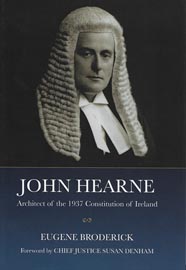
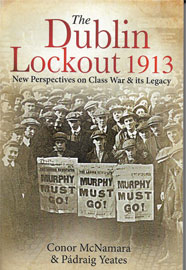
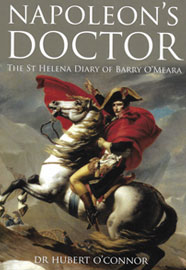
You are by now familiar with Eugene Broderick’s John Hearne: architect of the 1937 Constitution of Ireland, which has been exceptionally well received. In it he blows apart the popular, received perception that the constitution was written by Dev with quill by candlelight while John Charles watched over his shoulder. But while Broderick makes clear that it was de Valera’s constitution, it was the gifted civil servant Hearne who took Dev’s vision and built the structure by which that vision could be realised. Dev described Hearne’s contribution as ‘fundamental’.
It helped immensely that the pair were temperamentally suited. Both were instinctively conservative (despite Dev’s early revolutionary credentials), both were daily Mass-goers (Hearne was a ‘failed priest’ who had abandoned Maynooth, while Dev too had considered the priesthood), and both were legally minded and focused on the meaning of words. Broderick writes well and manages to keep what could easily have been an arid, turgid tale ticking over nicely.
On a side note, Hearne went on to serve as Ireland’s first ambassador to the US from 1950 to 1960. As mentioned by Gerard Madden in our May/June edition in his article on Senator Joseph McCarthy, the conservative Catholic Hearne ‘took seriously McCarthy’s claims that the United States had been penetrated by communists’. Madden writes: ‘The senator’s defeat, Hearne felt, would strengthen American communism’.
It is not clear (to me, as Myles might have phrased it) why O’Brien Press has reissued Hubert O’Connor’s entertaining Napoleon’s doctor: the St Helena diary of Barry O’Meara, but it is welcome. Perhaps it is because it is the 200th anniversary of the main body of time O’Meara spent looking after the emperor. It was originally published in 2008 as The emperor and the Irishman, and Dr O’Connor died in 2011.
As the original title suggested, O’Meara was a 32-year-old Dublin medic serving with the British navy who was assigned to observe Napoleon on his island prison in the South Atlantic. O’Meara won over Napoleon in part with his manner, helped no doubt by his language skills: French, of course, and in particular Italian.
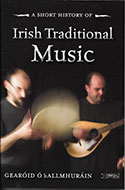
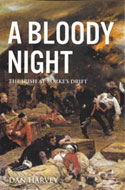
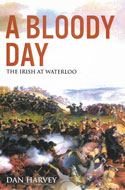
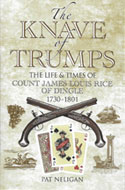
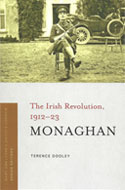
Things began well for Napoleon on his island retreat—until the arrival of a new governor, Sir Hudson Lowe, who proved to be a self-important functionary determined to make life miserable for his empire’s former greatest foe. He also targeted O’Meara, not least because he feared that he was conspiring with the prisoner, but also simply because he was Irish.
O’Meara’s diary entries paint a generous picture of the emperor, before, after around eighteen months, Hudson Lowe succeeded in getting the doctor transferred. Napoleon suffered a long and painful death, riddled with liver and stomach cancer (which O’Meara had diagnosed but which Hudson Lowe had ignored), as the autopsy confirmed. O’Connor also suggests that Napoleon had been self-medicating with arsenic. Let’s just say that it seemed a good idea at the time.
And on the subject of anniversaries, it is hard to credit the reticence with which academia, the state and the political establishment initially approached the ‘decade of centenaries’. By the end of the 2016 centenary year it was clear that an unprecedented popular interest in and engagement with Irish history was taking place. The first inklings of this were the events in 2013, now manifested in print with The Dublin Lockout of 1913: new perspectives on class war and its legacy, edited by Conor McNamara and Padraig Yeates, which originated from the Byrne-Perry Summer School, Gorey, Co. Wexford, in June 2013.
Brian Hanley’s ‘“The layers of an onion”: reflections on 1913, class and memory of the Irish Revolution’ and Padraig Yeates’s ‘1913: the Cinderella centenary’ set the tone, asking hard questions not only about the past but also about the present. As Conor McNamara puts it in his introduction, ‘If we cannot ask the question over a century later whether 1916 and all that followed was worth it, when can we ask it?’
The book is dedicated to Fr Walter Ford, the driving force behind the Byrne-Perry Summer School since its inception in 1995, who sadly passed away in 2015.
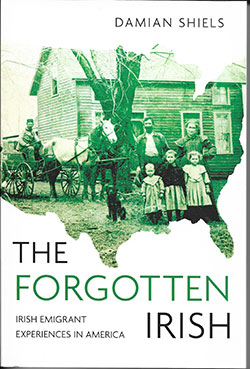 In our last issue you will, of course, have read Damien Shiels’s account of the effect on Cork of the arrival of US navy personnel 100 years ago. In his new book, The forgotten Irish: Irish emigrant experiences in America, Shiels dives into the archives of the pension records of those Irish who fought for the Union in the American civil war—or, more precisely, of those who died in the war. In order for their widows and dependants (some back in Ireland) to claim the money, they had to file long, detailed claims about their lives. With this material Shiels examines the emigrant experience of 35 families. It’s an important book—with one large caveat: the publisher has chosen to reproduce the documents in a typeface of faux ‘handwriting’ which is virtually illegible. Deeply annoying.
In our last issue you will, of course, have read Damien Shiels’s account of the effect on Cork of the arrival of US navy personnel 100 years ago. In his new book, The forgotten Irish: Irish emigrant experiences in America, Shiels dives into the archives of the pension records of those Irish who fought for the Union in the American civil war—or, more precisely, of those who died in the war. In order for their widows and dependants (some back in Ireland) to claim the money, they had to file long, detailed claims about their lives. With this material Shiels examines the emigrant experience of 35 families. It’s an important book—with one large caveat: the publisher has chosen to reproduce the documents in a typeface of faux ‘handwriting’ which is virtually illegible. Deeply annoying.
Gearóid Ó hAllmhuráin, a performer, lecturer and ethnomusicologist, has produced a little gem in A short history of Irish traditional music. From the instruments of the European Celts, through the music’s evolution in every period of Irish history to the current international fascination with the form, Ó hAllmhuráin brings his expertise and a nice writing style to this compact but comprehensive work.
Retired Army Lieutenant Colonel Dan Harvey exploits the perspective and discipline of a military man in his two investigations, A bloody night: the Irish at Rorke’s Drift and A bloody day: the Irish at Waterloo. Harvey’s style is an engaging mix of matter of fact and snappy in these short, informative stories.
Diarmaid Ferriter has written that Pat Neligan’s The knave of trumps: the life and times of Count James Louis Rice of Dingle 1730–1801 is ‘thoroughly researched, written with great panache and clarity, [and] it unfolds the many layers of a fascinating life with aplomb’. ’Nuff said.
Terence Dooley of Maynooth University tackles County Monaghan for Four Courts Press’s series The Irish revolution, 1912–23. ‘For many, the revolution brought a sense of lingering disillusionment: Monaghan unionists were aggrieved at their desertion by their fellow Ulster covenanters and nationalists were disappointed by how little the social and political order had changed’.
















